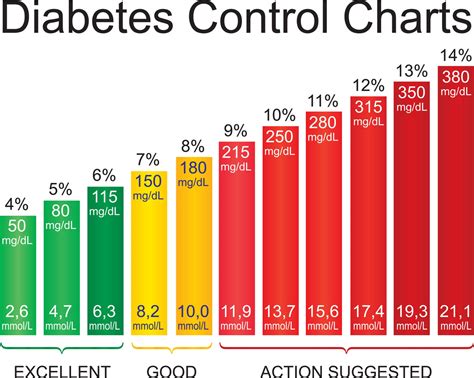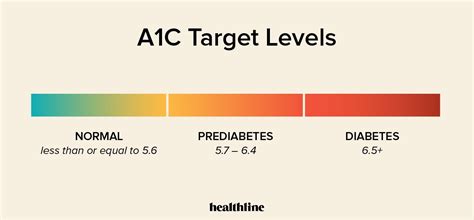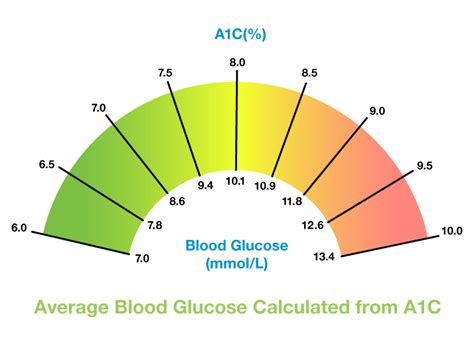Intro
Learn the ideal Good A1c Level Range, understanding normal blood sugar levels, and maintaining a healthy HbA1c score to prevent diabetes complications, with insights on target A1c levels and glucose control strategies.
Maintaining a good A1c level range is crucial for individuals with diabetes, as it helps to prevent complications and ensure overall health. The A1c test, also known as the hemoglobin A1c or HbA1c test, measures the average level of glucose in the blood over the past 2-3 months. This test is a vital tool for diagnosing and managing diabetes, and understanding the importance of maintaining a good A1c level range is essential for individuals with the condition.
For individuals with diabetes, managing blood sugar levels is a daily challenge. The A1c test provides a snapshot of blood sugar control over time, allowing healthcare providers to assess the effectiveness of treatment plans and make adjustments as needed. The American Diabetes Association (ADA) recommends that individuals with diabetes aim for an A1c level below 7%, although this target may vary depending on individual factors, such as age, health status, and treatment goals. By maintaining a good A1c level range, individuals with diabetes can reduce their risk of developing complications, such as heart disease, kidney disease, and nerve damage.
Achieving and maintaining a good A1c level range requires a comprehensive approach to diabetes management, including a healthy diet, regular physical activity, and adherence to medication regimens. Individuals with diabetes must also monitor their blood sugar levels regularly, using a glucose meter to track their levels and make adjustments to their treatment plan as needed. By working closely with their healthcare provider and making lifestyle changes, individuals with diabetes can achieve and maintain a good A1c level range, reducing their risk of complications and improving their overall health and well-being.
Understanding A1c Levels

A1c Level Ranges
The following A1c level ranges are generally used to diagnose and manage diabetes: * Normal: Below 5.7% * Prediabetes: 5.7-6.4% * Diabetes: 6.5% or higher It's essential to note that A1c levels can be influenced by various factors, such as hemoglobin variants, anemia, and certain medical conditions. Therefore, A1c levels should be interpreted in conjunction with other diagnostic tests and clinical evaluations.Benefits of Maintaining a Good A1c Level Range

Strategies for Maintaining a Good A1c Level Range
To maintain a good A1c level range, individuals with diabetes should: * Follow a healthy diet, focusing on whole, unprocessed foods and limiting sugary drinks and refined carbohydrates * Engage in regular physical activity, such as walking, cycling, or swimming, for at least 150 minutes per week * Take medications as prescribed, and monitor blood sugar levels regularly * Attend regular healthcare appointments, and work closely with their healthcare provider to adjust treatment plans as needed * Stay hydrated, getting enough sleep, and managing stress through relaxation techniques, such as meditation or deep breathingA1c Level Targets for Different Populations

A1c Level Monitoring
Regular A1c level monitoring is essential for individuals with diabetes, as it provides a snapshot of blood sugar control over time. The frequency of A1c level monitoring depends on individual factors, such as: * Treatment goals and plans * Blood sugar control * Presence of complications or comorbidities * Changes in medication or treatment plansChallenges and Barriers to Maintaining a Good A1c Level Range

Overcoming Challenges and Barriers
To overcome these challenges and barriers, individuals with diabetes should: * Seek support from healthcare providers, family, and friends * Connect with diabetes communities and support groups * Access educational resources and online platforms * Prioritize self-care and stress management * Advocate for themselves and their needs, seeking help when neededConclusion and Next Steps

Final Thoughts
Maintaining a good A1c level range requires a comprehensive approach to diabetes management, including a healthy diet, regular physical activity, and adherence to medication regimens. By working closely with their healthcare provider and making lifestyle changes, individuals with diabetes can achieve and maintain a good A1c level range, reducing their risk of complications and improving their overall health and well-being. We encourage readers to share their experiences, ask questions, and seek support from their healthcare provider and diabetes community.What is a good A1c level range for individuals with diabetes?
+A good A1c level range for individuals with diabetes is below 7%, although this target may vary depending on individual factors, such as age, health status, and treatment goals.
How often should I get my A1c levels checked?
+The frequency of A1c level monitoring depends on individual factors, such as treatment goals and plans, blood sugar control, and presence of complications or comorbidities.
What are the benefits of maintaining a good A1c level range?
+Maintaining a good A1c level range has numerous benefits, including reduced risk of complications, improved blood sugar control, and enhanced quality of life.
